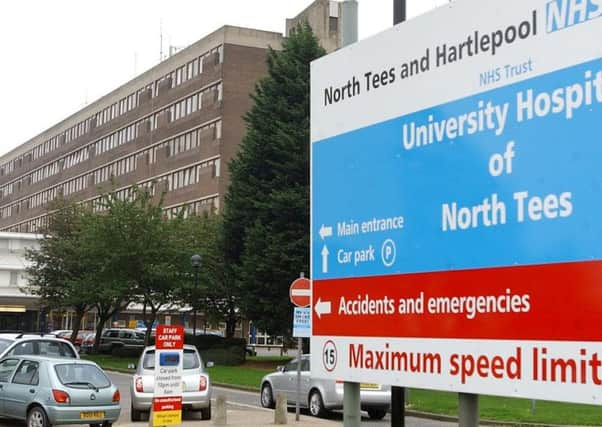Hospital officials answer council's concerns over high death rates


Medical chiefs attended a meeting in Hartlepool after a council committee raised concerns over mortality figures that showed more people were dying than expected and compared to other parts of the country.
Professor Jane Metcalf from North Tees and Hartlepool NHS Foundation Trust, which runs Hartlepool and North Tees hospitals, told Hartlepool council its rates are now within expected ranges.
Advertisement
Hide AdAdvertisement
Hide AdProf Metcalf, deputy medical director at the trust, talked about improvements to two mortality rates which give a ratio of actual to expected deaths.
One measurement hospitals use is a Hospital Standardised Mortality Ratio (HSMR) which accounts for deaths due to one of 56 causes.
A score over 100 means that the number of deaths is higher than expected.
The trust’s HSMR was one of the highest nationally between April 2014 and March 2015 at 128.08 but is now 105.29.
Advertisement
Hide AdAdvertisement
Hide AdAnd its Summary Hospital Mortality Indicator (SHMI) which includes deaths within 30 days of discharge, has reduced from a high of 124.53 to 111.84.
Prof Metcalf said: “We are within expected range for the first time in a long, long time.”
She accepted the previous figures were concerning saying: “Clearly, this is not something we have been comfortable with as a trust.
“Internally there has been a huge amount of work going on.”
Councillor Ray Martin-Wells, chair of the Audit and Governance Committee, said the presentation revealed that one of the trust’s death rates was higher than the council previously realised.
Advertisement
Hide AdAdvertisement
Hide AdHe said: “For the first time this committee has seen just how bad things were.
“I think it’s safe to say they were appallingly bad and your quality accounts did not reflect that.
“It is pleasing to see that the mortality figures do seem to be getting better and let’s just hope that that continues.”
Coun Lesley Hamilton asked what had led to a reduction in the HSMR rate.
Advertisement
Hide AdAdvertisement
Hide AdProf Metcalf said: “There’s no one thing. There are a number of areas where we have improved what we were doing.”
She said they included better documentation of conditions that contribute to deaths, consultants being given end of life training as part of a focus on quality of care, and a group set up to look at recommendations of the national Keogh Mortality Review.
Prof Metcalf added a bad winter in 2014 saw a spike in deaths from pneumonia impacting the figures.